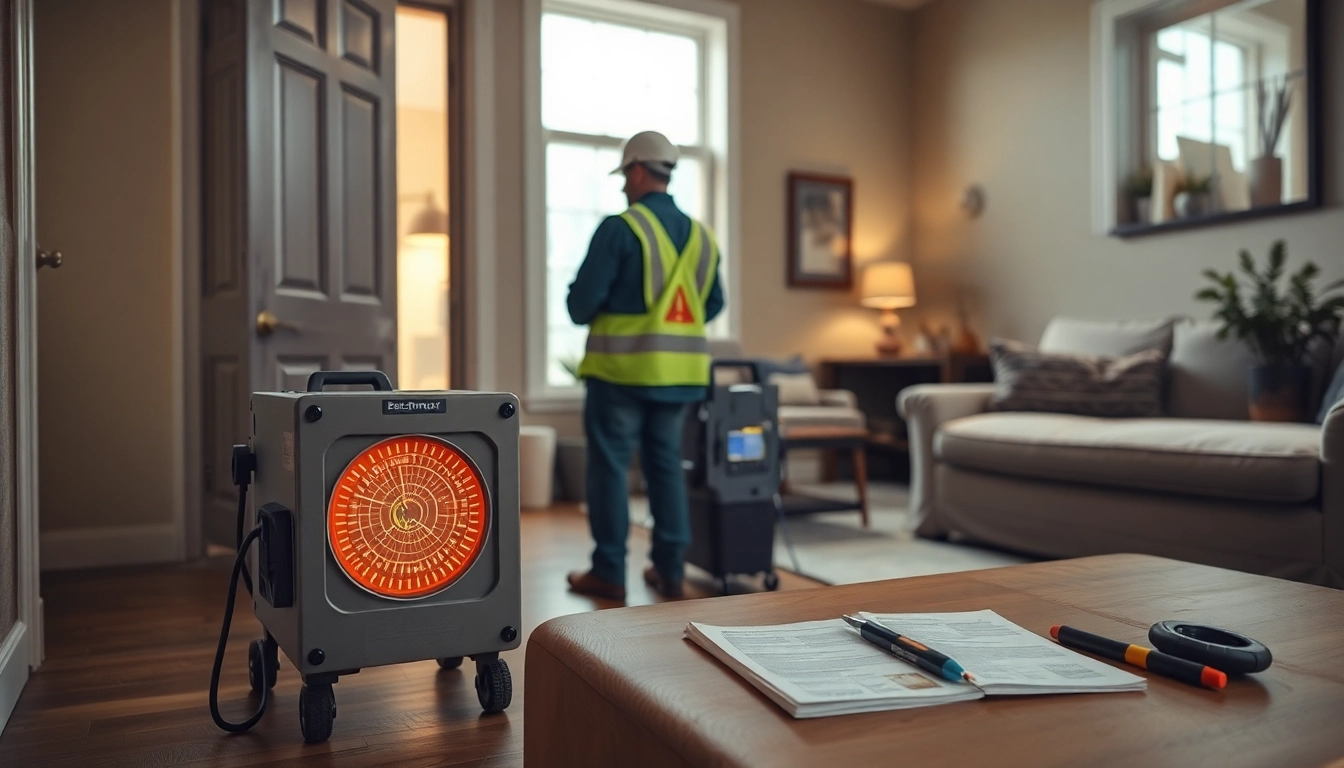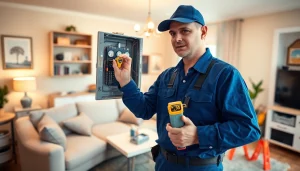Understanding Blower Door Tests
What is a Blower Door Test?
A blower door test is a diagnostic procedure designed to measure the airtightness of a building, primarily focusing on residential structures. By utilizing a specialized fan that creates a controlled pressure difference, the test identifies the amount of air leakage present. As air flows through unintentional openings, the test quantifies how much of this air escapes from the structure. Results are typically expressed in terms of air changes per hour (ACH) at a standard pressure of 50 pascals.
Importance of Energy Efficiency
The role of blower door tests extends far beyond simple diagnostics; they are crucial in the pursuit of energy efficiency. In an age where energy conservation is increasingly important, understanding how much air escapes a home can help homeowners make informed decisions about insulation and HVAC systems. Your home may be losing conditioned air through unintended gaps, thus leading to increased energy consumption and higher utility bills. By identifying these leaks, a blower door test is instrumental in creating a more energy-efficient living environment.
Common Applications in Home Inspections
Blower door tests are commonly employed during home inspections, particularly when assessing energy performance. They are utilized during real estate transactions to provide potential buyers with insights into the home’s energy efficiency. Additionally, new constructions may undergo blower door tests to ensure compliance with energy codes and standards. Homeowners seeking to improve comfort and reduce energy costs often request blower door testing as part of their energy audit.
Evaluating Blower Door Test Companies
Key Factors to Consider
When choosing among blower door test companies, several key factors should be taken into account. These include experience in the field, the technology used for testing, and the comprehensiveness of the services offered. Assessing these factors can greatly influence the reliability of the test results and the overall quality of the service received.
Certifications and Qualifications
Certifications are a strong indicator of a company’s professionalism and commitment to conducting blower door tests according to industry standards. Many reputable companies employ technicians certified by organizations such as the Building Performance Institute (BPI) or RESNET. These certifications ensure that the technicians are trained in the latest methodologies for conducting tests and analyzing their findings accurately.
Customer Reviews and Testimonials
Customer feedback plays a vital role in evaluating blower door test companies. Reviews from previous clients can provide invaluable insights into the company’s reliability, professionalism, and level of service. Hearing about other homeowners’ experiences can guide your decision-making process, helping you discern which companies are consistently able to meet or exceed customer expectations.
Benefits of Professional Blower Door Testing
Improving Home Comfort
One of the main benefits of professional blower door testing is the improvement in home comfort. When a home is effectively sealed, occupants experience a more stable indoor climate, less draftiness, and fewer temperature fluctuations. Homeowners often report enhanced comfort in their spaces following the recommendations made by professionals after the test.
Lowering Energy Costs
Lower energy costs are a significant advantage of conducting blower door tests. By identifying problematic areas where air leaks occur, homeowners can take action to seal those areas, which often leads to substantial reductions in heating and cooling expenses. Over time, these savings can offset the initial costs associated with the blower door testing and subsequent repairs.
Identifying Air Leakage Areas
Blower door tests pinpoint specific locations of air leakage, making it easier for homeowners to implement targeted solutions. Understanding exactly where air is escaping allows for more efficient use of resources when repairing or improving insulation. Whether it’s gaps in walls, poorly sealed windows, or doors, identifying these issues is vital for long-term energy efficiency and comfort.
Choosing the Right Services
Comparing Pricing Models
Pricing models can vary significantly between blower door test companies. It’s essential to compare these models to understand what services are included in the fee. Some companies may charge a flat rate for the testing while others might include additional consultation or follow-up assistance. Be sure to clarify what each quote includes and any potential additional costs that may arise.
Understanding Service Packages
Before making your decision, familiarize yourself with the different service packages offered by various blower door test companies. Some may provide comprehensive packages that include pre-testing inspections, blower door testing, and post-test consulting, while others may offer a more basic service. Understanding these differences can help you select a service that best meets your specific needs.
How to Prepare Your Home for Testing
Preparing your home for a blower door test can help ensure accurate results. Common preparation steps include closing all windows and doors and turning off any combustion appliances such as furnaces, water heaters, and fireplaces to prevent backdrafting. Clearing pathways around test areas is also advisable to allow technicians easy access to the doors and windows that will be assessed.
After the Blower Door Test: Next Steps
Interpreting Your Results
Post-test, interpreting the results is crucial. The data gathered during the blower door test must be analyzed to understand your home’s performance. Key metrics to focus on include the ACH value and specific leakage locations. Professional auditors typically provide clear explanations of your results alongside recommendations for improvements.
Implementing Recommendations
Once you have understood the results, the next step is implementing the recommended changes. This may involve sealing air leaks, adding insulation, or even upgrading windows and doors. Taking action based on test results can significantly enhance your home’s energy efficiency and comfort. Following up with another blower door test after improvements can help ensure that the changes made have produced the desired results.
Long-term Maintenance Plans
After improving your home’s airtightness, consider establishing a long-term maintenance plan. Regular assessments can help catch new leaks or degradation of seals over time. Implementing a maintenance plan with periodic blower door tests can contribute to enduring energy efficiency and comfort in your living space, maintaining the investment you’ve made in your home.


